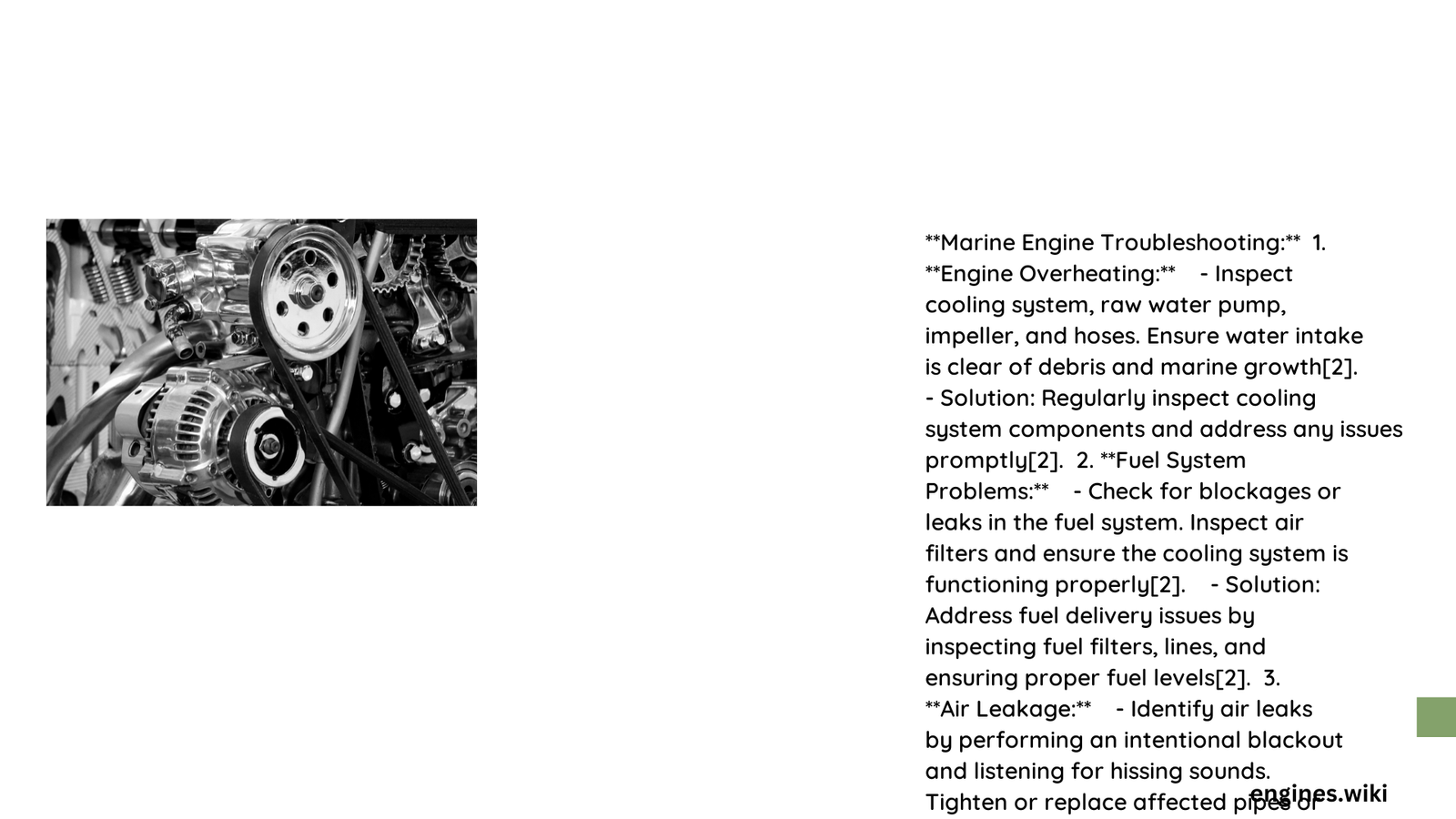Marine engine troubleshooting requires systematic diagnostic approaches to identify and resolve complex mechanical issues that can compromise vessel performance and safety. Boat owners and marine technicians must understand intricate engine systems, recognize warning signs, and implement precise repair strategies to maintain optimal marine propulsion functionality across various environmental conditions and engine configurations.
What Causes Marine Engine Performance Problems?
Marine engines face unique challenges compared to land-based engines, including constant exposure to corrosive saltwater, extreme temperature variations, and demanding operational environments. Understanding these challenges is crucial for effective marine engine troubleshooting.
Key Diagnostic Considerations
| Problem Area | Potential Symptoms | Diagnostic Approach |
|---|---|---|
| Cooling System | Overheating, temperature fluctuations | Check water flow, inspect impeller, examine heat exchanger |
| Fuel System | Rough idling, power loss | Evaluate fuel quality, inspect filters, check injection system |
| Electrical Components | Starting difficulties, intermittent power | Test battery, examine wiring, verify sensor functionality |
How to Identify Marine Engine Issues?

Visual Inspection Techniques
- External Engine Examination
- Check for visible corrosion
- Inspect mounting points
- Look for fluid leaks
-
Examine belt conditions
-
Operational Performance Assessment
- Monitor RPM stability
- Listen for unusual sounds
- Evaluate acceleration responsiveness
- Check exhaust color and smoke patterns
What Tools Are Essential for Marine Engine Diagnostics?
Recommended Diagnostic Equipment
- Multimeter
- Infrared thermometer
- Compression tester
- Fuel pressure gauge
- Impeller puller
- Diagnostic scanning tool
How to Perform Basic Marine Engine Troubleshooting?
Step-by-Step Diagnostic Process
Cooling System Evaluation
- Measure raw water intake temperature
- Check impeller condition
- Verify thermostat functionality
- Inspect heat exchanger for blockages
Fuel System Analysis
- Test fuel quality
- Examine filter condition
- Check fuel pump performance
- Verify injection timing
Electrical System Verification
- Test battery voltage
- Inspect starter motor
- Check alternator output
- Examine wiring harness integrity
What Maintenance Practices Prevent Marine Engine Problems?
Preventative Maintenance Strategies
- Regular Servicing
- Change oil at recommended intervals
- Replace filters consistently
-
Perform comprehensive system checks
-
Environmental Protection
- Rinse engine after saltwater exposure
- Use corrosion inhibitors
- Store vessel properly during off-seasons
Common Marine Engine Failure Modes
Top Troubleshooting Scenarios
- Overheating complications
- Fuel system contamination
- Electrical system failures
- Corrosion-related degradation
- Mechanical wear and tear
Expert Recommendations
Professional Insights
Successful marine engine troubleshooting requires:
– Systematic diagnostic approach
– Comprehensive technical knowledge
– Patience and methodical investigation
– Investment in quality diagnostic tools
Conclusion
Marine engine troubleshooting demands specialized skills, technical understanding, and meticulous attention to detail. By implementing structured diagnostic techniques and maintaining proactive maintenance practices, boat owners can ensure reliable, efficient marine engine performance.
